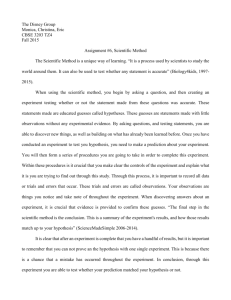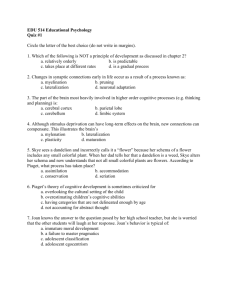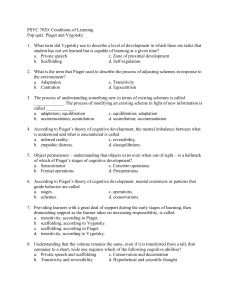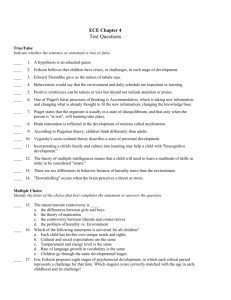File
advertisement
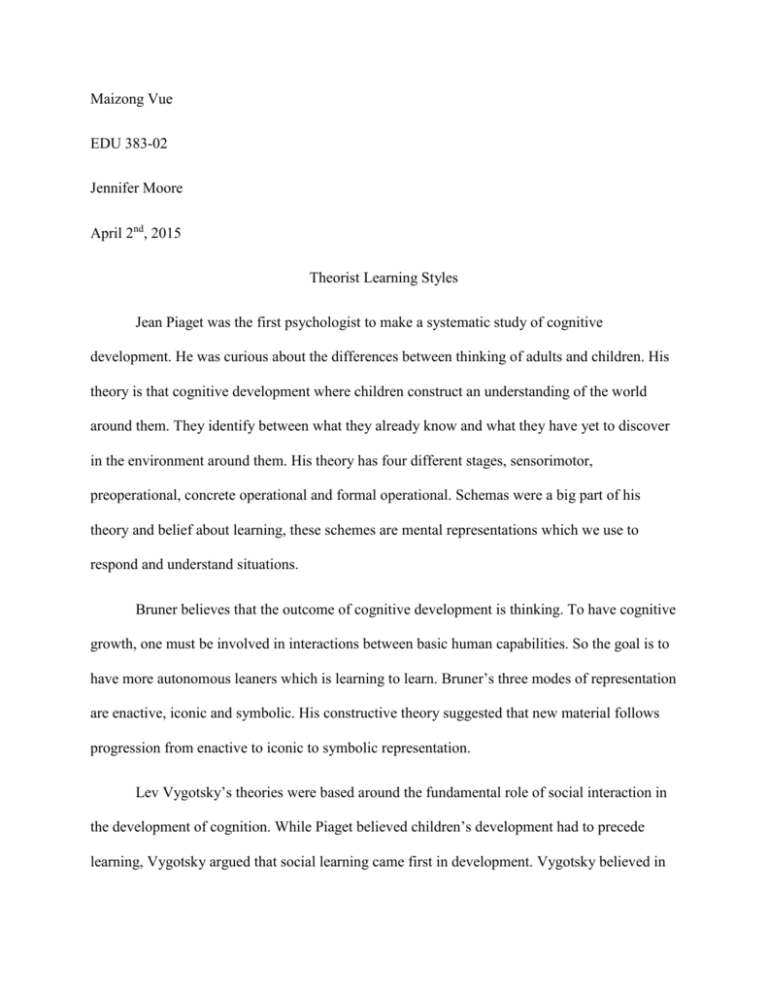
Maizong Vue EDU 383-02 Jennifer Moore April 2nd, 2015 Theorist Learning Styles Jean Piaget was the first psychologist to make a systematic study of cognitive development. He was curious about the differences between thinking of adults and children. His theory is that cognitive development where children construct an understanding of the world around them. They identify between what they already know and what they have yet to discover in the environment around them. His theory has four different stages, sensorimotor, preoperational, concrete operational and formal operational. Schemas were a big part of his theory and belief about learning, these schemes are mental representations which we use to respond and understand situations. Bruner believes that the outcome of cognitive development is thinking. To have cognitive growth, one must be involved in interactions between basic human capabilities. So the goal is to have more autonomous leaners which is learning to learn. Bruner’s three modes of representation are enactive, iconic and symbolic. His constructive theory suggested that new material follows progression from enactive to iconic to symbolic representation. Lev Vygotsky’s theories were based around the fundamental role of social interaction in the development of cognition. While Piaget believed children’s development had to precede learning, Vygotsky argued that social learning came first in development. Vygotsky believed in different cultures shaping a child’s development and learning. He was big on community and social factors. All three theorists have similarities and differences from their research, but I believe all can be used in helping children with learning. I believe children learn at different pace and at different times. There isn’t always a set guideline for what is right, in most cases children reach the stage they need to be at. Vygotsky focuses more on social interactions with others and the environment, which I would have to agree with. Children often learn best when they have hands on experience with the things around them. Piaget: Vygotsky: Bruner: 1. Schemas Like Piaget, Vygotsky claimed The aim of education should (Building blocks of that infants are born with the be to create autonomous knowledge). basic materials/abilities for learners (i.e., learning to intellectual development - learn). 2. Adaptation processes that enable the transition from Piaget focuses on motor In his research on the cognitive one stage to another reflexes and sensory abilities. development of children (equilibrium, assimilation Lev Vygotsky refers (1966), Jerome Bruner to Elementary Mental proposed three modes of Functions – representation: and accommodation). 3. Stages of Development: o Attention o Sensation Enactive representation (action-based) Iconic representation o Perception (image-based) o Memory Symbolic representation (language-based) Work Cited Bruner - Learning Theory in Education | Simply Psychology. (n.d.). Retrieved April 2, 2015, from http://www.simplypsychology.org/bruner.html Jean Piaget. (2009, September 17). Retrieved April 2, 2015, from http://www.simplypsychology.org/piaget.html#stages Vygotsky | Simply Psychology. (n.d.). Retrieved April 2, 2015, from http://www.simplypsychology.org/vygotsky.html

